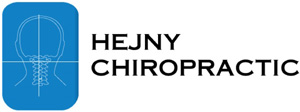 The most common vestibular disorder is called BPPV, or benign paroxysmal positional vertigo. It affects over 150,000 people every year. One of the most bothersome issues caused by BPPV are severe vertigo episodes usually triggered by changes in head position. By learning the meaning of each of the words that this condition is named after, it can help you better understand what this common vertigo disorder consists of.
The most common vestibular disorder is called BPPV, or benign paroxysmal positional vertigo. It affects over 150,000 people every year. One of the most bothersome issues caused by BPPV are severe vertigo episodes usually triggered by changes in head position. By learning the meaning of each of the words that this condition is named after, it can help you better understand what this common vertigo disorder consists of.
- Benign – benign means that the condition is not harmful in a life-threatening way.
- Paroxysmal – paroxysmal refers to the timing of the episodes, which come in sudden, short-lived spells.
- Positional – vertigo episodes associated with BPPV are triggered by certain head movements or positions.
- Vertigo – the hallmark characteristic of BPPV, vertigo is defined as a false sensation of rotational movement.
Table of Contents
What Is Behind a BPPV Episode?
BPPV is the result of an issue in the inner ear. The system that controls our body’s ability to balance is referred to as the vestibular system, and it includes 3 fluid-filled semicircular canals. There are usually calcium carbonate crystals embedded in another area of the inner ear called the utricle. These crystals help with sensing motion and provide our brain with the information needed to keep our sense of balance. As time goes on, these crystals can break down and may get dislodged, or the crystals can get damaged from an inner ear infection or head injury. This can cause them to travel into the fluid-filled canals where they should not be. This disrupts optimal fluid movement in the inner ear, which results in intense episodes of vertigo.
To learn more about the connection between head and neck injuries and vertigo, download our complimentary e-book by clicking the image below.
What Are the Signs of BPPV?
One of the main indicators that BPPV is behind your vertigo episodes is that the episodes do not cause constant dizziness (BPPV episodes are relatively short but intense) and it is nearly always triggered by changes in head position. There are a few other ways you can tell if you have benign paroxysmal positional vertigo:
- BPPV is the likely cause of vertigo that comes on when you lie down.
- BPPV can flare up other conditions like migraines. Migraine sufferers who have BPPV may notice more frequent or severe headaches.
- If you woke up in the morning with vertigo, BPPV is the likely cause.
- BPPV can cause very specific, abnormal eye movements called nystagmus that come with your vertigo episodes.
Commonly Recommended BPPV Relief Options
In some situations, you can get relief from BPPV by doing certain maneuvers that are designed to transition the particles out of the semicircular canals. Canalith repositioning maneuvers such as the Epley maneuver have proven to be an excellent option for symptomatic relief. The Epley maneuver relies on moving the person’s body and head into various positions so that gravity helps to loosen crystals and they can move to a different part of the inner ear where they are not causing vertigo symptoms.
Rarely, BPPV sufferers might be prescribed medications that are designed to suppress the vestibular system. These are usually given for only short-term relief since long-term use can actually cause symptoms to worsen.
The Connection Between BPPV and the Neck
Head position is directly connected to the neck position. This is because of the way that your neck is designed, specifically the upper part of it, which makes the wide range of movement of our heads possible. The strength and alignment of your neck directly affects how well you are able to keep your head up. This means BPPV can be as much a neck issue as it is an issue related to your head position. This is particularly true for vertigo sufferers who have any kind of history of head or neck injury. This is how we know that vertigo is linked to neck problems:
- It can be aggravated by changes in head position. Vertigo and dizziness can be triggered by rolling over or getting up out of bed, extending your neck back to look up (like when retrieving something that is high up and out of reach), or bending down to pick something up off the ground or tie your shoes.
- Communication of signals are transmitted through the vestibular nerve and brainstem, and the brainstem is located within and protected by the uppermost vertebrae in your spine. Unusual positioning of these vertebrae can disrupt signals that inform your brain where your body is positioned in space. This can cause dysfunction in the vestibular system, including vertigo.
- A history of head or neck injury can cause otoconia (the inner ear crystals) to dislodge. The injury can range in severity from a slip and fall or a mild fender-bender can be what’s behind the loosening of the calcium crystals in your inner ear. An accident or injury can also cause a shift of the vertebrae that hold your head up, which can cause abnormal nerve function and head position.
Upper Cervical Chiropractic Care Brings Hope to Vertigo Sufferers
Upper cervical chiropractic care is a dedicated niche within the chiropractic profession that focuses on the vertebra at the upper part of the neck. The proper positioning of these vertebrae – the atlas (C1) and the axis (C2) – makes a dramatic difference in head movement, brainstem function, and the ability of the rest of the spine to work well. If you suffer from vertigo, getting your neck examined by an upper cervical chiropractor can be extremely beneficial if you want lasting, natural relief. This is even more vital for you if you have any history of head or neck trauma, even if it seemed mild at the time.
Due to the precise nature of upper cervical chiropractic adjustments, they do not require much force. In fact, the adjustments are both gentle and effective because of the time we take in being sure we have provided an in-depth analysis of your head and neck positioning, which allows us to customize adjustments that will hold in place for as long as possible. When you correct and maintain normal atlas alignment, your body is able to start to heal naturally and function optimally again. If you have concluded that you must deal with recurring bouts of BPPV, we’d love to inspire you with hope by sharing more about how we can help your specific condition. Please contact us for a free, no-obligation consultation today.
References:
https://www.asha.org/uploadedFiles/AIS-Benign-Paroxysmal-Positional-Vertigo.pdf
To schedule a complimentary consultation with Dr. Hejny, call our Spring Lake Park office at 763-230-0116. You can also click the button below.
 If you are outside of the local area, you can find an Upper Cervical Doctor near you at www.uppercervicalawareness.com.
If you are outside of the local area, you can find an Upper Cervical Doctor near you at www.uppercervicalawareness.com.
